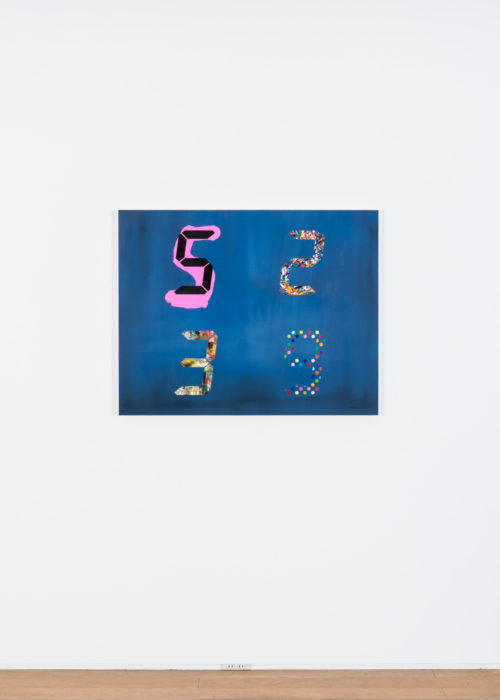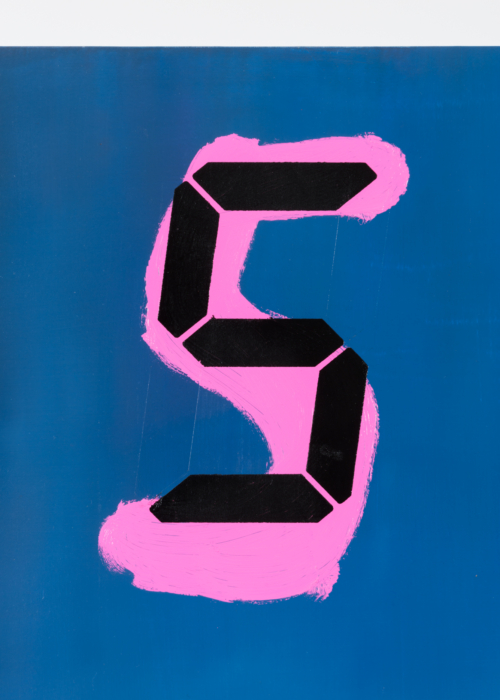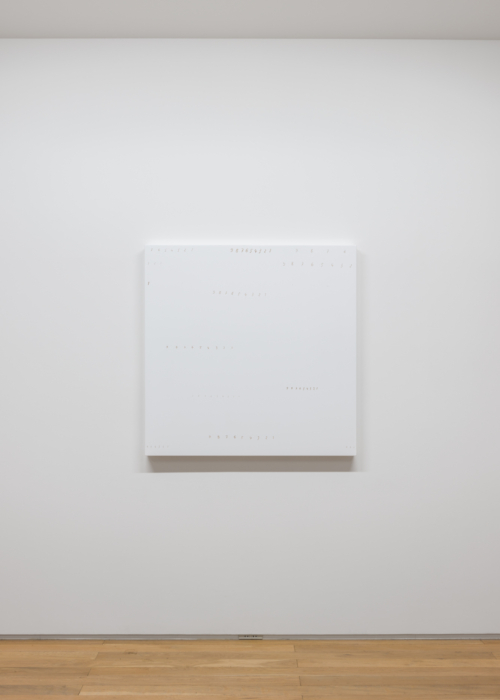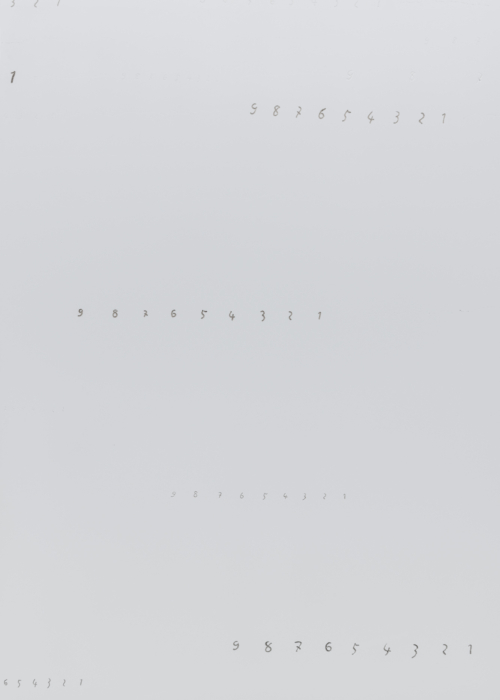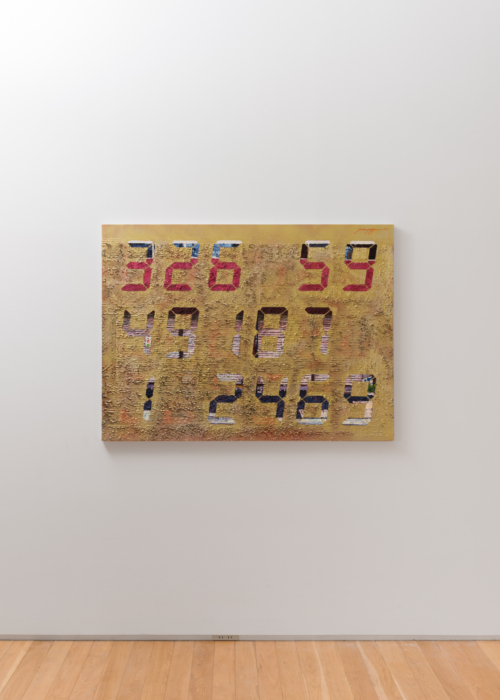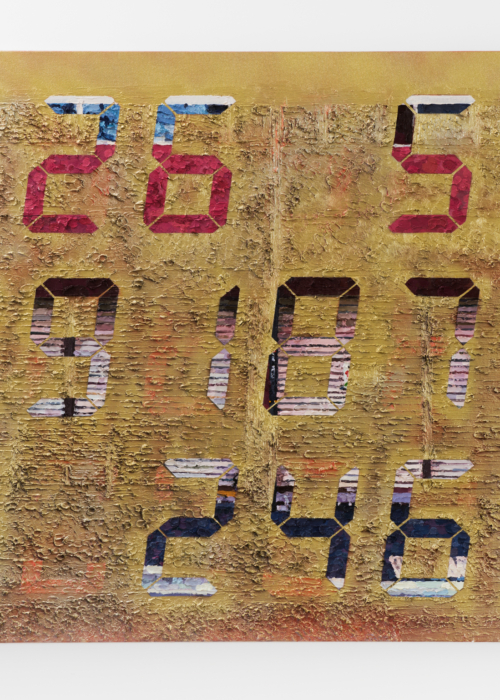Counter Painting with Kenji Shibata
Oil and silkscreen paint on Kenji Shibata's painting (oil on paper)
79x100cm
Counter Painting with Atsushi Saga
Carved on Atsushi Saga's painting (urethane coat on Finland birch plywood)
100x100x7cm
Counter Painting with Naoki Tomita
Lacquer spray paint on the Naoki Tomita's Painting (oil on canvas)
97x130.3cm
2014
Courtesy SCAI THE BATHHOUSE
Photo: Nobutada Omote
Counter Painting
To this day, I have created artwork on the basis of the following three concepts:
- Keep changing
- Connect with everything
- Continue forever
This project especially emphasizes "Connect with everything." Until now, I have always drawn numbers (means the time) above pictures of the subject, but this is the first time I've experimented with this on the work of living artist.
Firstly, I asked for the cooperation of several artists through contacts and social media, after gaining their understanding for what I wanted to do. Amongst the applications I received, I chose the artist I felt I could personally work together with. I then bought their artwork and worked on them.
This experiment - specifically, the act of an artist taking another living artist's work and adding something to it - may be considered an insult to other artists, but it's already been done – in 1953, with American artist Robert Rauschenberg’s “Erased de Kooning Drawing”. In this case, Rauschenberg explained his intentions to fellow American artist Willem de Kooning, who then provided Rauschenberg with one of his drawings. Rauschenberg erased the drawing using erasers, turning the now-blank piece of paper into his own artwork. He said, “The drawing to be erased must be a true work of art. It had to be one of his (de Kooning’s) drawings, as he was a great artist of his age.”
This experiment however is decisively different to Rauschenberg’s in both its attitude and sense of purpose. I have endeavored for many things – to have sincere dialogue with other artists / artwork with, to have new and deep relationships, to say the anonymity of artwork, to say criticism of originality, to say skepticism towards art history, to say criticism of capitalism, to say the accidentalness of paintings, to say criticism of the ownership of artworks, and to have the dedication to “quality”.
So now a new artwork has been created, but just whose artwork is it? Also, can it be considered a piece of art history and go on the art market? Can it be considered original? Nonetheless, the artwork is here. It is only a complete, "quality" of artwork when people come to see it. This is, after all, what the “quality” of art is all about.
Finally, I would like to thank from the bottom of my heart those who participated in this project – Mr. Atsushi Saga, Mr. Kenji Shibata and Mr. Naoki Tomita. This exhibition would simply not be possible without their understanding. Mr. Saga especially supported me from the exhibition’s installation layout to the preparation of invitations and more. I am deeply in your debt. Also, I would like to thank from the bottom of my heart Mr. Seiichi Yoshino, the owner of CAPSULE who happily provided the venue for this exhibition.
